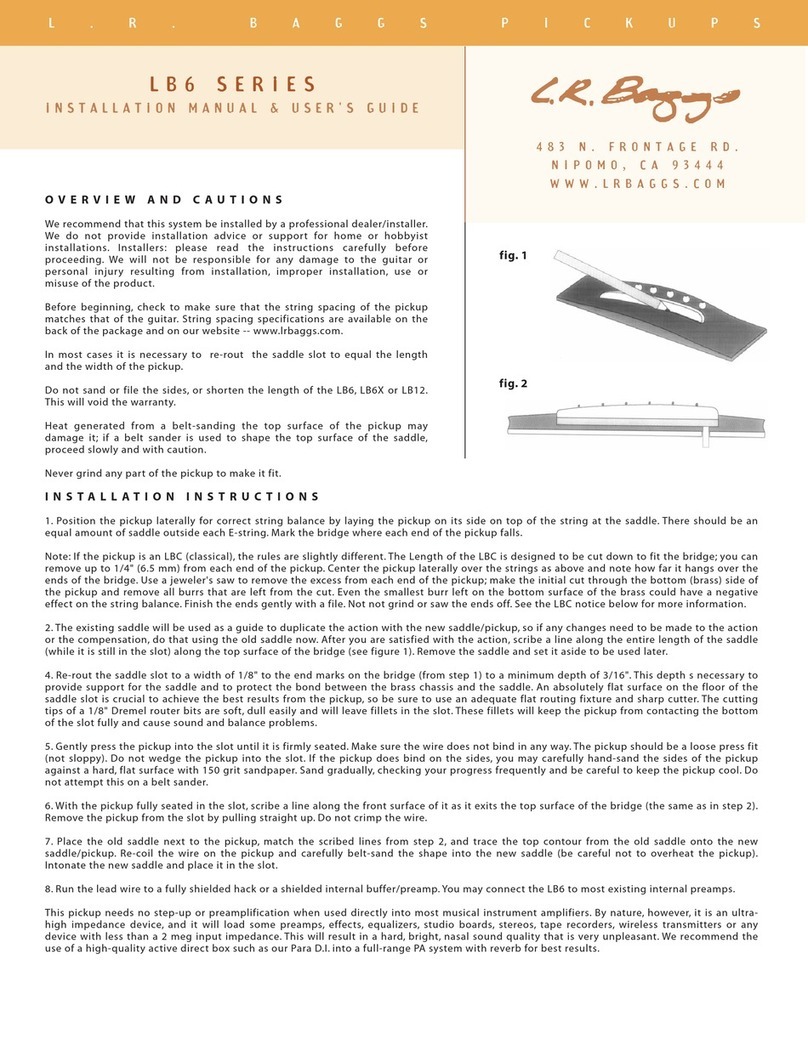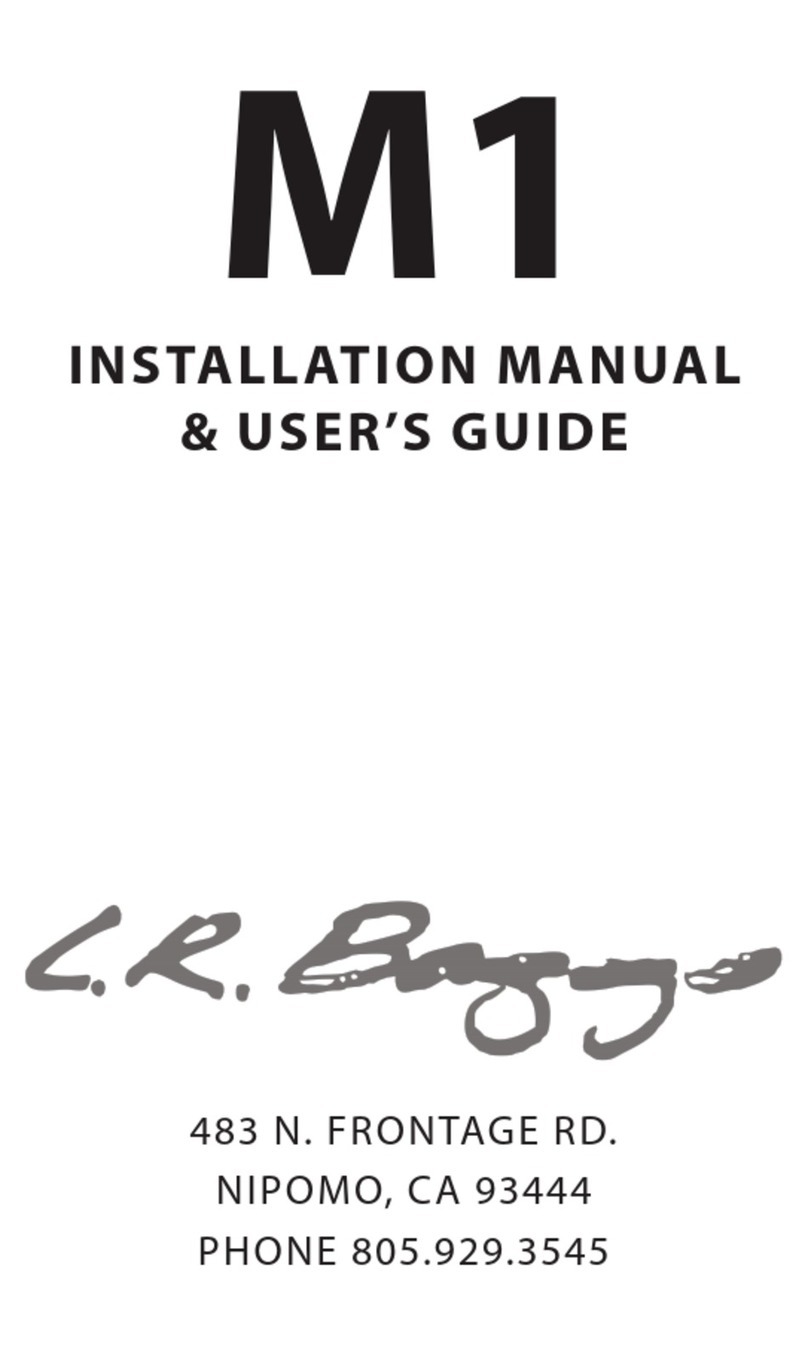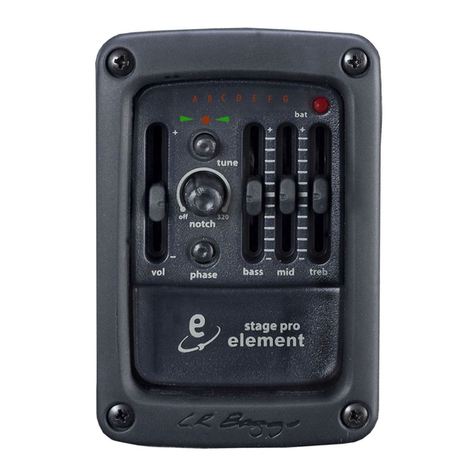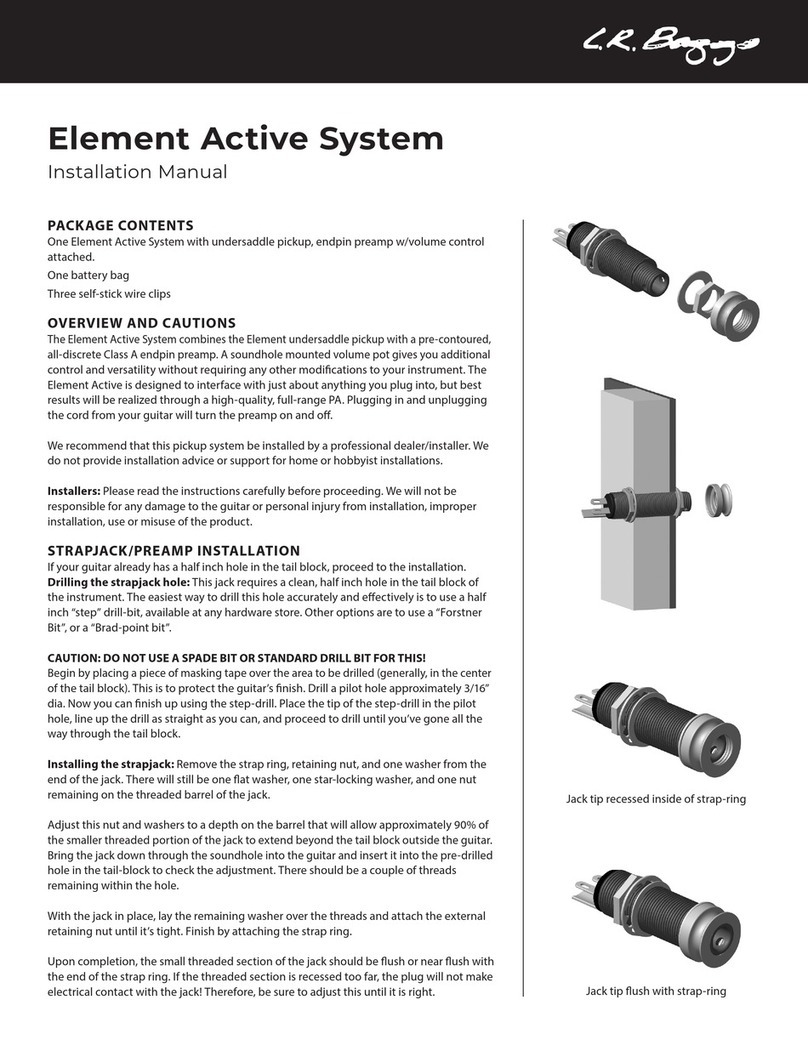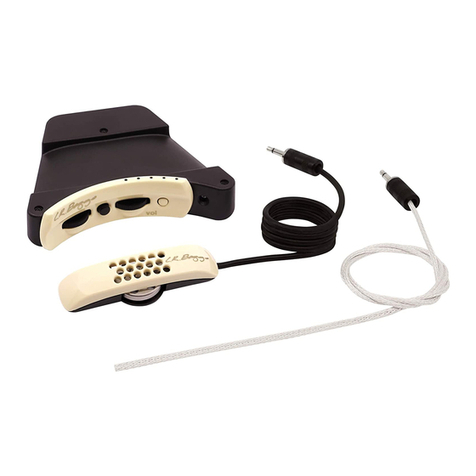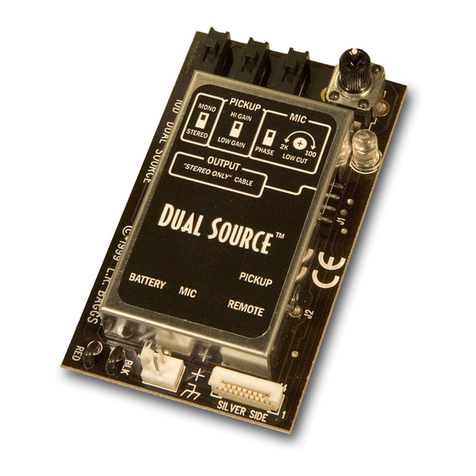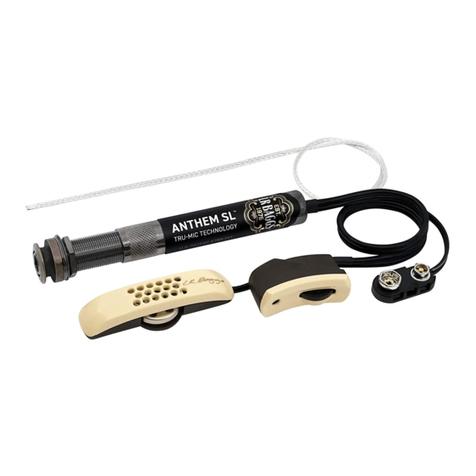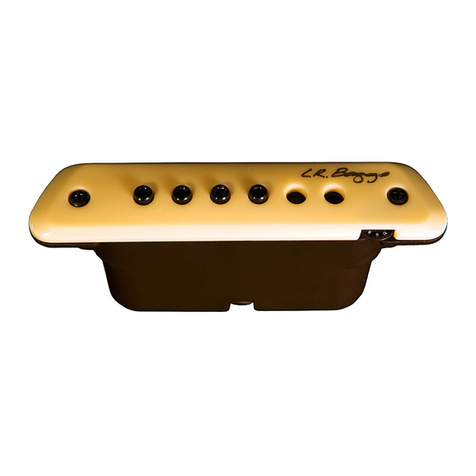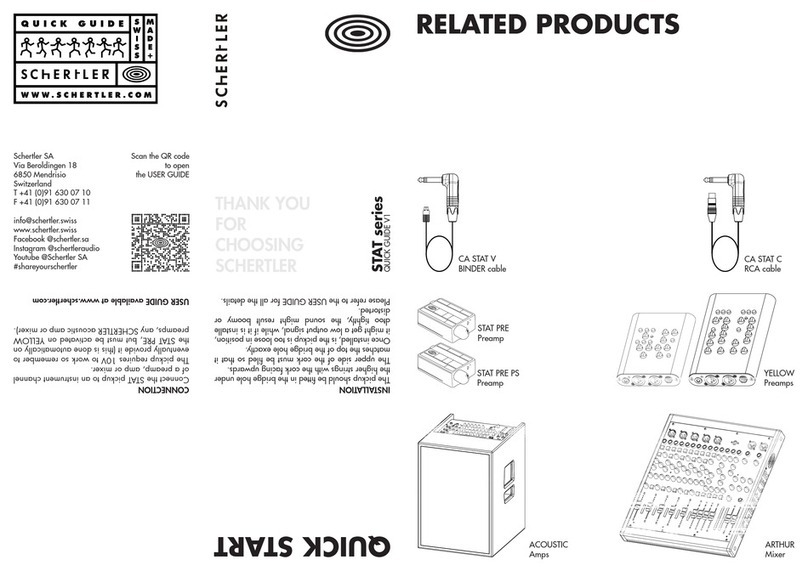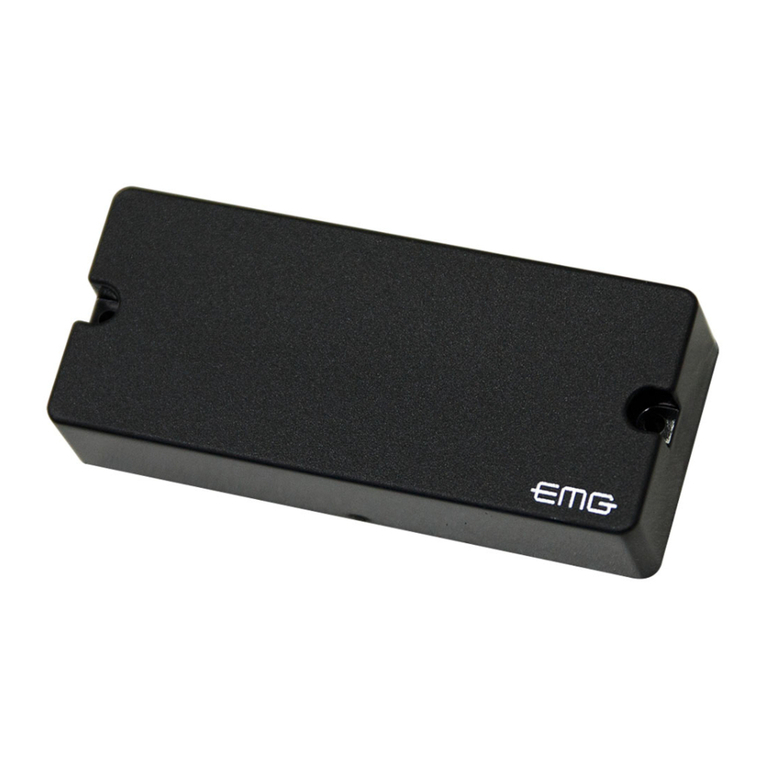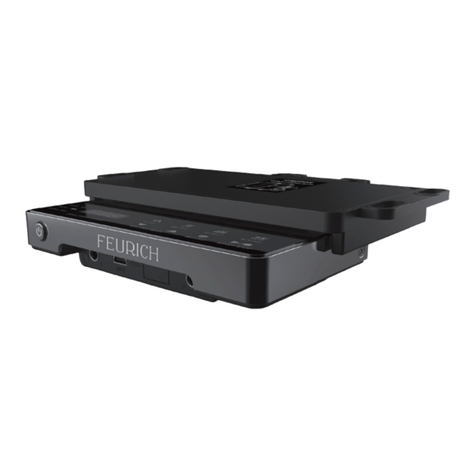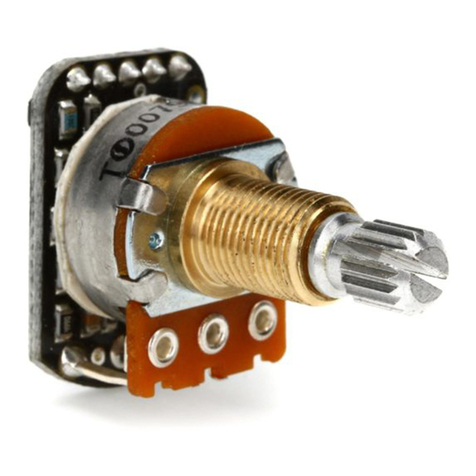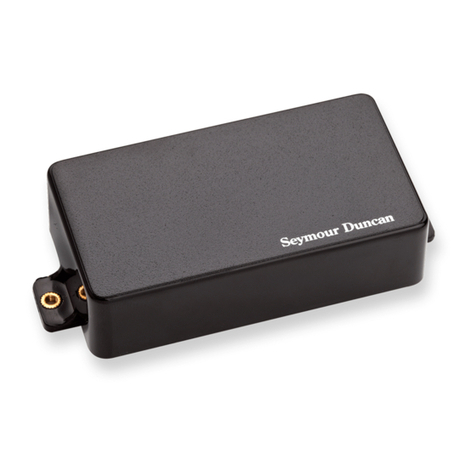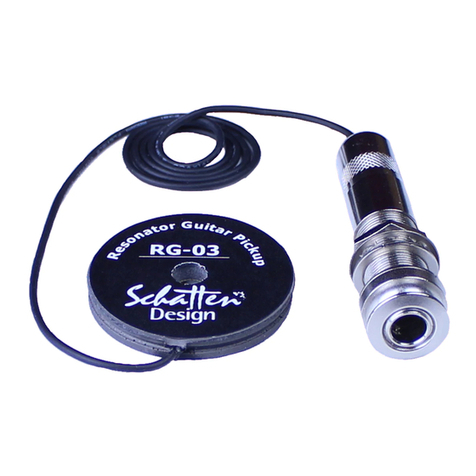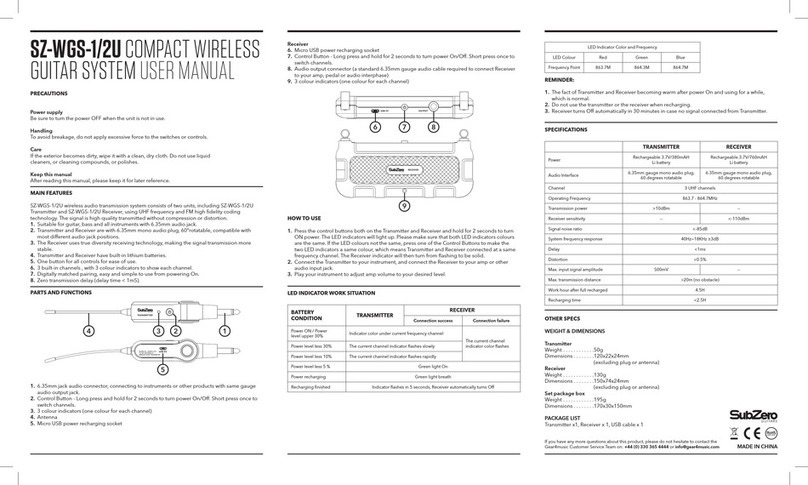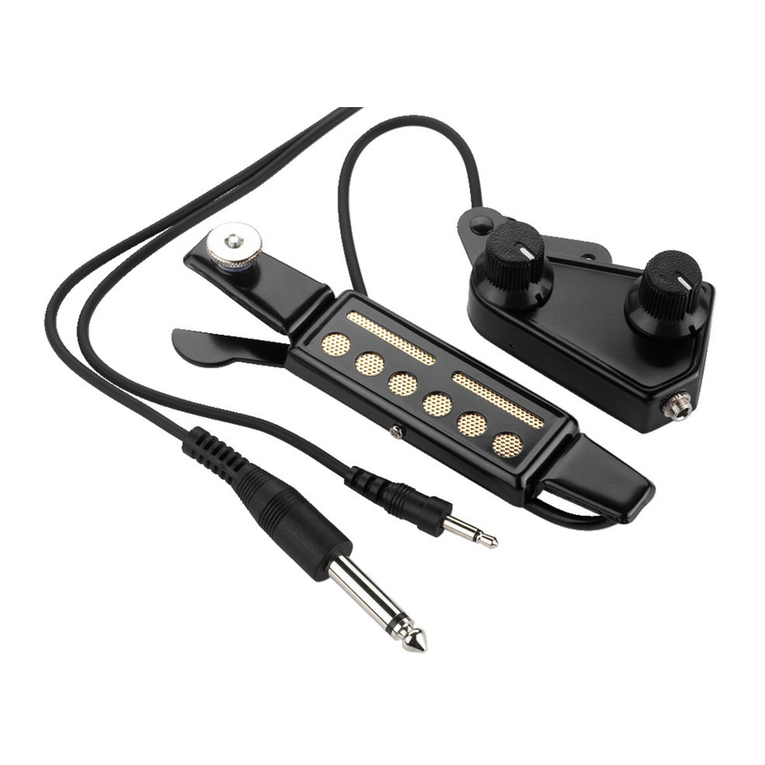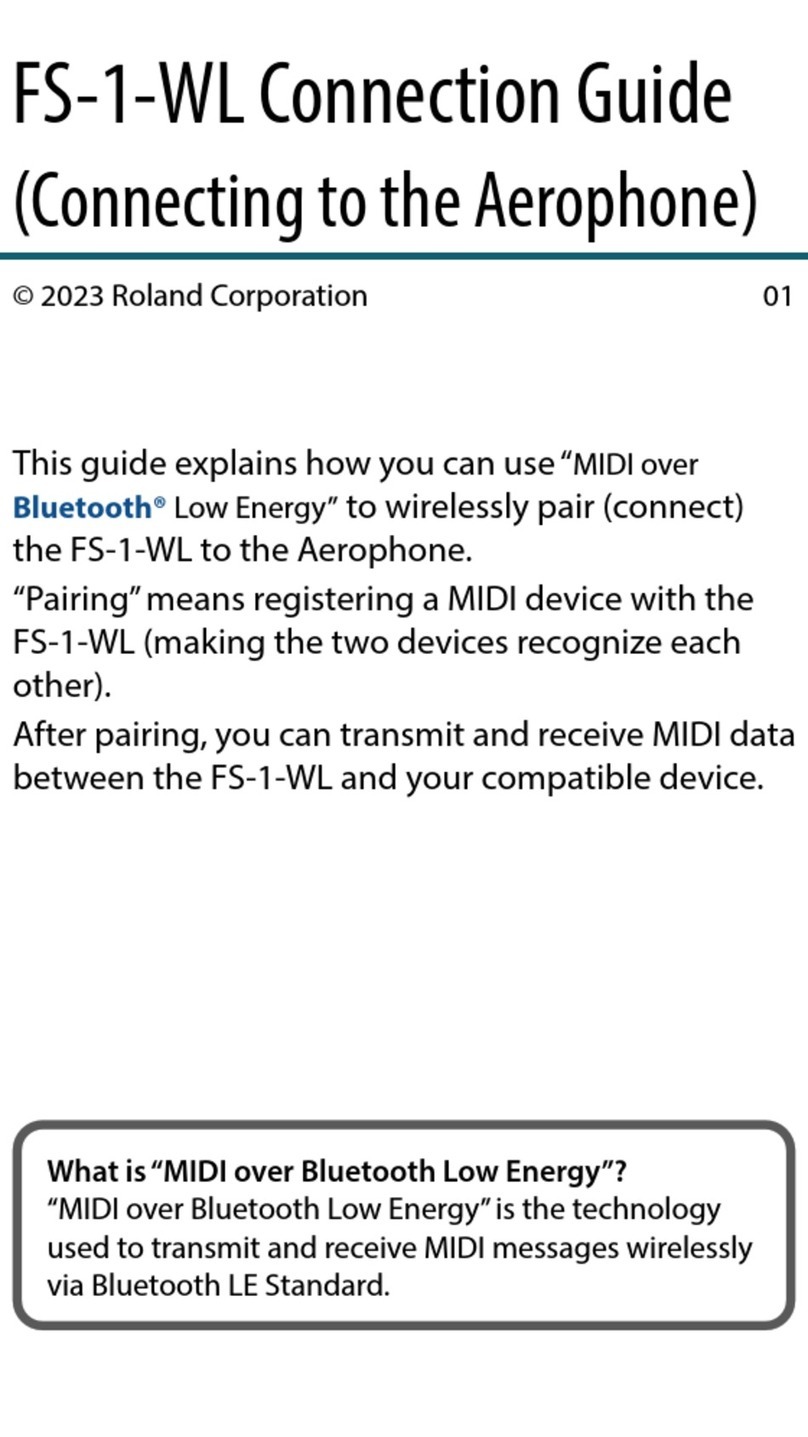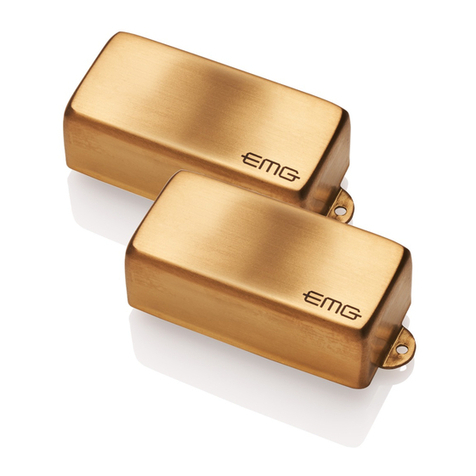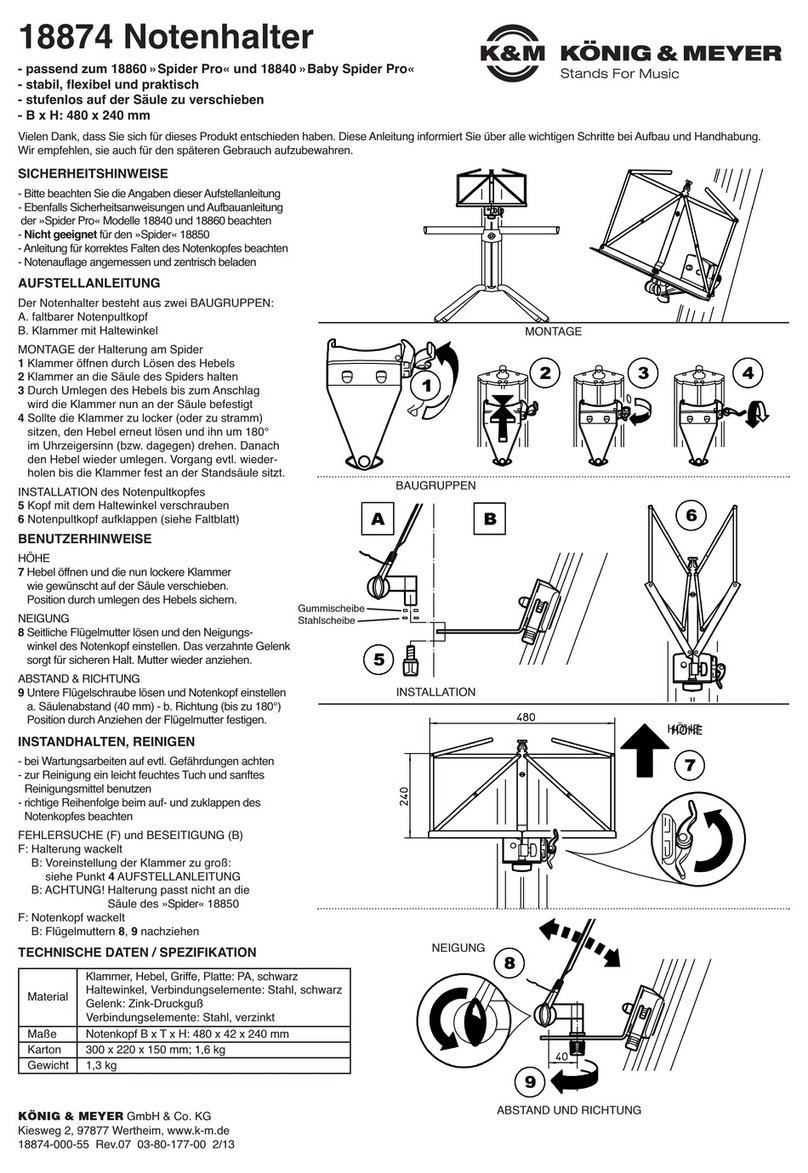
fig. 7
fig. 6
tie block
saddle slot
bridge
iBeam
drill pin hole here
bridge
fig. 8
This top-down view depicts the bridge with
the saddle removed. These pin hole locations
apply to all non-pin bridges.
12. Restring the guitar and plug into your amp or PA. Now test the pickup
placement. If the sound is satisfactory (see below for a definition of this),
secure the wire with a wire clip and turn to the Battery Bag installation in
section 8. If the sound is unsatisfactory, we encourage you to experiment with
alternative placements (see section 7). Do not test the pickup placement
without firmly securing the adhesive. Without completely securing the pickup,
the sound test will produce unreliable results.
The optimum location will deliver a sound that is focused and tight, with
proper string balance and good presence. It will capture enough of the string
resonance to be articulate, but will be mellowed by a full and strong body
resonance. Ultimately, it will accurately capture the distinct tone of the
instrument. An unsatisfactory location will often be characterized by a woofy
or nasal tone, poor string balance and a high sensitivity to feedback.
5.iBEAM INSTALLATION: NON-PIN
BRIDGE GUITARS
5.1 General positioning guidelines: The iBeam is a highly sensitive pickup;
therefore, placement and the unique characteristics of the instrument are
critical factors in producing the outstanding results of which the iBeam is
capable. A few millimeters in any direction can have profound effects on the
quality of the sound. Because every guitar is unique, you may be rewarded by
searching for the optimum location. With non-pin bridge guitars, it is unlikely
that the first selected spot will be ideal.
In general, placing the iBeam directly under the saddle will provide the
greatest sense of immediacy, impact, snap and “string” sound. Offsetting the
pickup either toward or away from the sound hole will increase the amount of
“body” in the sound and generally have a more mellow and homogeneous
tone with less midrange.
5.2 Non-pin bridge installation (initial placement): Installation on non-pin
bridge guitars requires that you remove the saddle, drill a small hole in each
end of the saddle slot, and insert guide pins to act as a reference when
locating the iBeam. The hole locations will correspond to the small slots in the
bottom of each end of the iBeam (see figure 8). A good starting place is to drill
the holes so that the iBeam will be
centered under the E strings. You will
need an inspection light, inspection
mirror, drill, 1/16" drill bit, matchsticks or
toothpicks, and a short pencil.
1. Drill a 1/16" hole through the bridge at
both ends of the saddle slot. If the guitar
already has a hole in the saddle slot for a
pickup, you may be able to use this as
one of the holes. The minimum distance
between the holes should allow the
notches in each end of the iBeam's base
to nest over the protruding matches or
toothpicks that you will insert as a
reference to place the iBeam.
2. Press the matches or toothpicks into
the holes until they just protrude (1/16"
to 1/8") into the guitar. These will act as
locating pins for determining the iBeam's
placement.
3. Remove the adhesive backing from the iBeam and, holding the iBeam between your thumb and two middle fingers, use your index and little
fingers to locate the matches.
4. Hold the iBeam at a slight angle away from the inside of the guitar top, and, using the slot in one end of the bottom of the iBeam, locate one of
the protruding matches. Rotate the other end of the pickup until you find the other protruding match with the slot in the other end of the iBeam.
Then very lightly press the adhesive against the bridge plate with just enough pressure to hold it in place.
5. Once you have tacked the pickup into place, insert an inspection mirror into the body to check the placement of the pickup. After confirming
that it is located correctly, remove the guide pins and press firmly with a little rocking motion over the surface of the top of the pickup to secure
it to the bridge plate. Be sure to apply an equal downward force to the top of the bridge when pressing up from the inside to prevent damage to
the guitar.
6. Restring the guitar and plug into your amp or PA. Now test the pickup placement. If the sound is satisfactory (see below for a definition of this),
secure the wire with a wire clip and turn to the Battery Bag installation in section 8. If the sound is unsatisfactory, we encourage you to
experiment with alternative placements (see section 7). Do not test the pickup placement without firmly securing the adhesive. Without
completely securing the pickup, the sound test will produce unreliable results.
The optimum location will deliver a sound that is focused and tight, with proper string balance and good presence. It will capture enough of the
string resonance to be articulate, but will be mellowed by a full and strong body resonance. Ultimately, it will accurately capture the distinct tone
